-
 Bitcoin
Bitcoin $118400
0.39% -
 Ethereum
Ethereum $3814
2.17% -
 XRP
XRP $3.547
1.34% -
 Tether USDt
Tether USDt $1.000
0.00% -
 BNB
BNB $769.5
2.95% -
 Solana
Solana $191.7
6.36% -
 USDC
USDC $0.9999
0.01% -
 Dogecoin
Dogecoin $0.2722
7.75% -
 Cardano
Cardano $0.8995
5.59% -
 TRON
TRON $0.3158
-0.78% -
 Hyperliquid
Hyperliquid $47.37
4.46% -
 Stellar
Stellar $0.4848
3.54% -
 Sui
Sui $4.031
1.72% -
 Chainlink
Chainlink $20.11
3.94% -
 Hedera
Hedera $0.2832
3.16% -
 Avalanche
Avalanche $26.20
4.27% -
 Bitcoin Cash
Bitcoin Cash $530.5
0.67% -
 Shiba Inu
Shiba Inu $0.00001568
3.59% -
 Litecoin
Litecoin $118.4
1.42% -
 UNUS SED LEO
UNUS SED LEO $8.976
-0.23% -
 Toncoin
Toncoin $3.349
2.54% -
 Polkadot
Polkadot $4.590
2.54% -
 Uniswap
Uniswap $10.56
-0.59% -
 Ethena USDe
Ethena USDe $1.001
0.00% -
 Monero
Monero $327.7
0.39% -
 Pepe
Pepe $0.00001422
2.62% -
 Bitget Token
Bitget Token $4.973
-1.22% -
 Dai
Dai $1.000
0.02% -
 Aave
Aave $331.9
1.59% -
 Bittensor
Bittensor $429.6
-0.56%
What is a private blockchain?
A private blockchain is a permissioned network offering controlled access, enhanced privacy, and efficient transaction processing for enterprise use.
Jul 21, 2025 at 02:42 pm
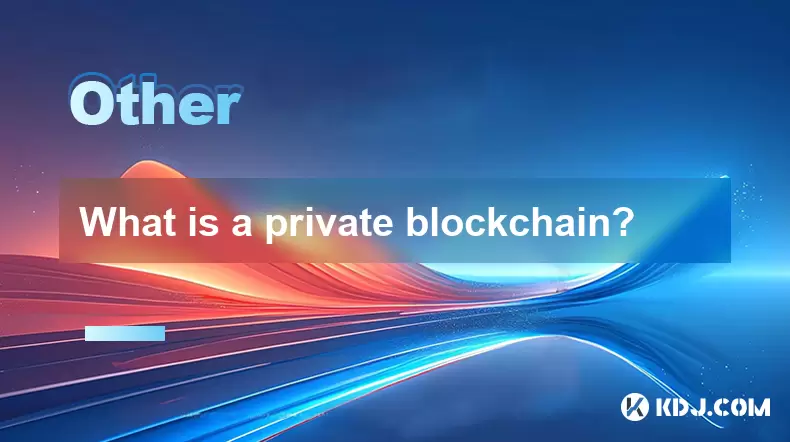
Understanding the Concept of a Private Blockchain
A private blockchain is a type of distributed ledger technology that operates under a closed network. Unlike public blockchains, which are open to anyone and fully decentralized, private blockchains are permissioned systems where access is restricted to a select group of participants. These networks are often used by organizations or consortia that want to maintain control over who can participate, validate transactions, and view data.
In a private blockchain, the consensus mechanism is typically more centralized, with pre-approved nodes managing the validation process. This setup allows for faster transaction processing and greater privacy, which is particularly useful for enterprise applications.
Key Features of a Private Blockchain
One of the defining characteristics of a private blockchain is its access control. Only authorized users can join the network, which makes it ideal for businesses that require confidentiality and data protection. This type of blockchain is usually managed by a single organization or a consortium of trusted entities.
Another important feature is the consensus mechanism. While public blockchains often use energy-intensive methods like Proof of Work (PoW), private blockchains typically rely on more efficient algorithms such as Proof of Authority (PoA) or Practical Byzantine Fault Tolerance (PBFT). These mechanisms enable faster and more scalable operations.
The transaction speed in a private blockchain is significantly higher compared to public chains. With fewer nodes to reach consensus, transactions can be validated in seconds. This efficiency makes private blockchains suitable for applications requiring real-time data processing.
Use Cases and Applications
Private blockchains are widely adopted in industries where data privacy and controlled access are crucial. One such application is in supply chain management, where companies can track the movement of goods without exposing sensitive business information to the public.
Another prominent use case is in financial services, particularly in interbank transactions. Institutions like JPMorgan have developed their own private blockchain platforms, such as JPM Coin, to facilitate secure and instant transfers of value between clients.
Healthcare is another sector benefiting from private blockchains. Hospitals and research organizations can securely share patient data while maintaining compliance with regulations like HIPAA. This ensures that only authorized personnel can access sensitive medical records.
How to Set Up a Private Blockchain
Setting up a private blockchain requires careful planning and execution. The first step is to define the network’s purpose and select the appropriate blockchain platform. Popular choices include Hyperledger Fabric, Ethereum (with private network configurations), and Corda.
Next, you need to configure the network parameters. This includes defining the consensus algorithm, block time, and access control policies. For example, in Ethereum-based private blockchains, you’ll create a genesis file that outlines these specifications.
After configuring the network, you must set up the nodes. Each node should be assigned specific roles, such as validator or observer. It’s crucial to ensure that the nodes are properly secured and communicate over a trusted network.
You then need to deploy smart contracts if your use case requires automated execution of agreements. This involves writing, testing, and deploying the contract code on the private chain.
Finally, you must implement user permissions and authentication mechanisms. This step ensures that only authorized individuals can interact with the network and perform specific actions.
Private Blockchain vs. Public Blockchain
The primary distinction between a private blockchain and a public blockchain lies in access control and decentralization. Public blockchains like Bitcoin and Ethereum are open to anyone, allowing full transparency and decentralization. In contrast, private blockchains restrict access to a defined group, offering more control and privacy.
Another difference is in the consensus process. Public blockchains typically use open and competitive mechanisms like PoW or Proof of Stake (PoS), which require significant computational power. Private blockchains, on the other hand, often use permissioned consensus models like PBFT or Raft, which are more efficient and scalable.
The transaction throughput also varies significantly. Public blockchains may struggle with scalability due to their decentralized nature, resulting in slower transaction speeds. Private blockchains, with fewer nodes involved, can handle a higher volume of transactions per second.
Data visibility is another key factor. In a public blockchain, all transactions are visible to everyone on the network. In a private blockchain, data access can be restricted based on user roles, ensuring confidentiality for sensitive operations.
Security Considerations in Private Blockchains
Security is a critical concern when deploying a private blockchain. Since the network is permissioned, it's essential to implement robust identity verification and access control systems. Multi-factor authentication and role-based permissions can help prevent unauthorized access.
Another important aspect is node security. Each node should be protected against potential threats such as hacking attempts or insider attacks. Regular audits and monitoring are necessary to detect and respond to suspicious activities.
Data encryption is also vital. All communications between nodes should be encrypted using secure protocols like TLS. Additionally, sensitive data stored on the blockchain should be encrypted at rest to prevent unauthorized retrieval.
Lastly, smart contract security must not be overlooked. Smart contracts should undergo thorough testing and auditing to identify and fix vulnerabilities before deployment. Using formal verification tools can help ensure that the code behaves as intended and is free from exploitable flaws.
Frequently Asked Questions
Q: Can a private blockchain be converted into a public blockchain?
A: Technically, it's possible to transition from a private to a public model, but this requires significant changes to the network’s architecture, including consensus mechanism, access control, and data visibility.
Q: Who controls a private blockchain?
A: A private blockchain is typically governed by a central authority or a consortium of trusted entities. They control access permissions, node management, and overall network governance.
Q: Are private blockchains truly immutable?
A: Yes, like all blockchains, private chains offer immutability once data is recorded. However, the level of decentralization is lower, so the governing body may have the ability to alter the ledger under certain conditions.
Q: Can anyone audit a private blockchain?
A: Auditing is restricted to authorized participants. Unlike public blockchains, where anyone can view and verify transactions, private blockchains limit visibility to approved users only.
Disclaimer:info@kdj.com
The information provided is not trading advice. kdj.com does not assume any responsibility for any investments made based on the information provided in this article. Cryptocurrencies are highly volatile and it is highly recommended that you invest with caution after thorough research!
If you believe that the content used on this website infringes your copyright, please contact us immediately (info@kdj.com) and we will delete it promptly.
- WIF Rockets: Riding the Bull Run Wave in Cryptocurrency
- 2025-07-21 18:50:12
- XRP Ledger Heats Up: Network Activity and Trader Buying on the Rise!
- 2025-07-21 18:50:12
- BFX, Altcoins, and ROI: Chasing the Next Big Crypto Wave
- 2025-07-21 18:55:12
- Binance, Seed Tag, and Crypto Tokens: What's the Deal?
- 2025-07-21 19:30:12
- Kaspa Price Surges Amid Layer 2 Buzz: Double Bottom Signals Bullish Momentum
- 2025-07-21 19:30:12
- Cryptocurrencies Surge: BNB Nears All-Time High Amid Market Uptick
- 2025-07-21 19:35:11
Related knowledge
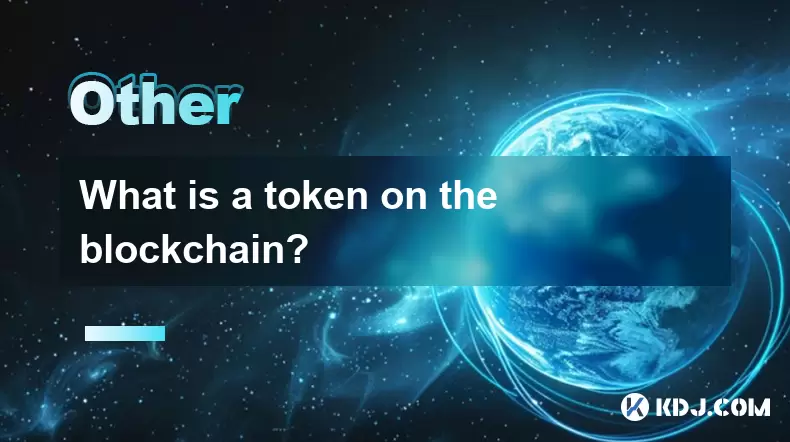
What is a token on the blockchain?
Jul 21,2025 at 07:00am
Understanding the Concept of a TokenIn the realm of blockchain technology, a token is a digital representation of an asset or utility that exists on a...
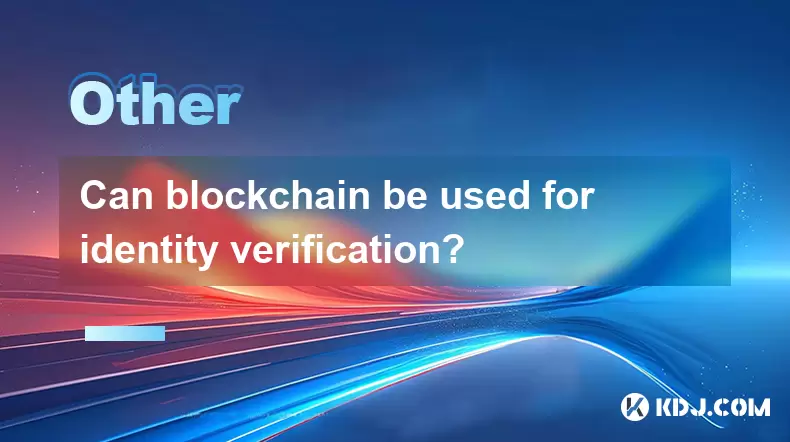
Can blockchain be used for identity verification?
Jul 18,2025 at 02:14pm
Understanding Identity Verification in the Digital AgeIn the modern digital landscape, identity verification has become a critical component for ensur...
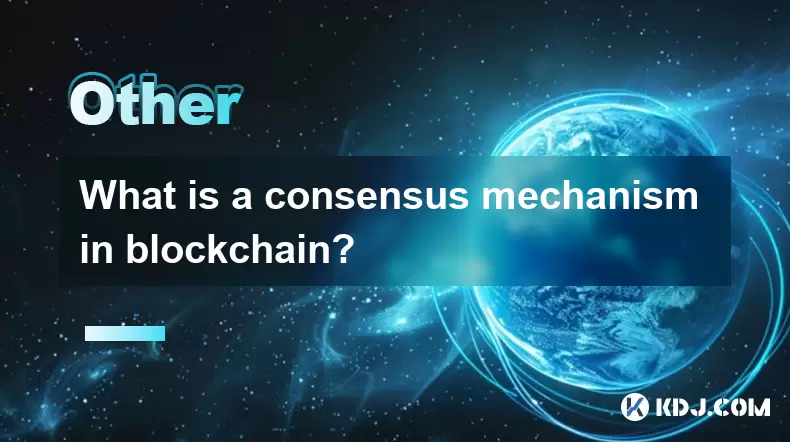
What is a consensus mechanism in blockchain?
Jul 21,2025 at 03:01am
Understanding the Basics of Consensus MechanismsA consensus mechanism is a critical component of any blockchain network. It refers to the process by w...
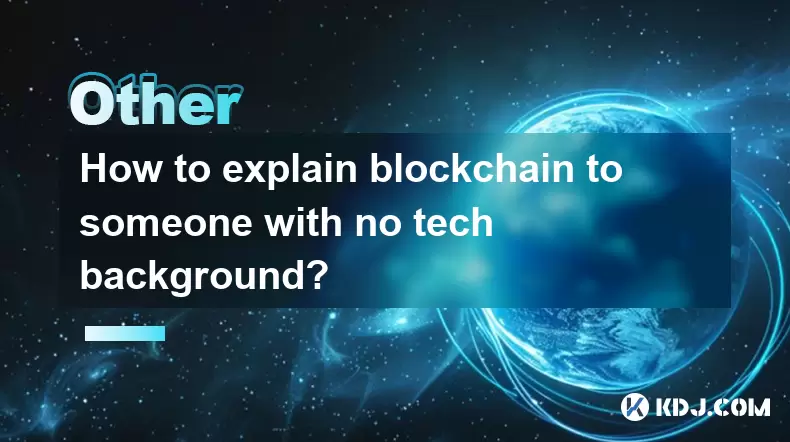
How to explain blockchain to someone with no tech background?
Jul 18,2025 at 11:08pm
Understanding the Basics of BlockchainTo explain blockchain to someone with no tech background, it's essential to start with simple analogies and avoi...
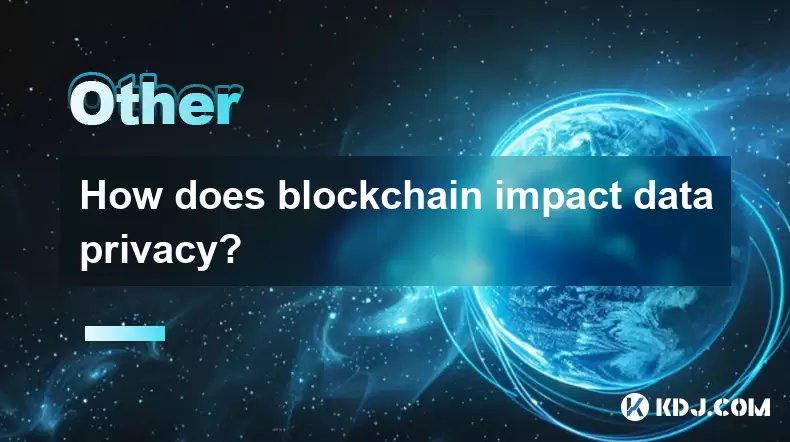
How does blockchain impact data privacy?
Jul 21,2025 at 02:21pm
Understanding the Role of Blockchain in Data PrivacyBlockchain technology, originally developed as the underlying infrastructure for cryptocurrencies ...
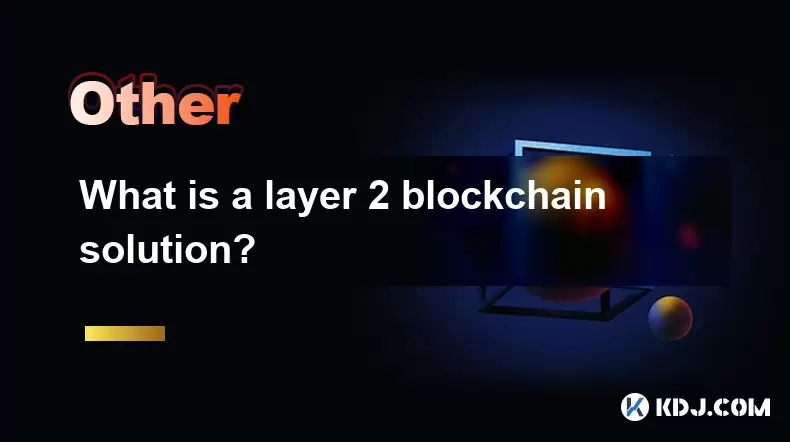
What is a layer 2 blockchain solution?
Jul 20,2025 at 01:42am
Understanding the Concept of Layer 2 BlockchainA layer 2 blockchain solution refers to a secondary framework or protocol built on top of an existing b...

What is a token on the blockchain?
Jul 21,2025 at 07:00am
Understanding the Concept of a TokenIn the realm of blockchain technology, a token is a digital representation of an asset or utility that exists on a...

Can blockchain be used for identity verification?
Jul 18,2025 at 02:14pm
Understanding Identity Verification in the Digital AgeIn the modern digital landscape, identity verification has become a critical component for ensur...

What is a consensus mechanism in blockchain?
Jul 21,2025 at 03:01am
Understanding the Basics of Consensus MechanismsA consensus mechanism is a critical component of any blockchain network. It refers to the process by w...

How to explain blockchain to someone with no tech background?
Jul 18,2025 at 11:08pm
Understanding the Basics of BlockchainTo explain blockchain to someone with no tech background, it's essential to start with simple analogies and avoi...

How does blockchain impact data privacy?
Jul 21,2025 at 02:21pm
Understanding the Role of Blockchain in Data PrivacyBlockchain technology, originally developed as the underlying infrastructure for cryptocurrencies ...

What is a layer 2 blockchain solution?
Jul 20,2025 at 01:42am
Understanding the Concept of Layer 2 BlockchainA layer 2 blockchain solution refers to a secondary framework or protocol built on top of an existing b...
See all articles

























































































